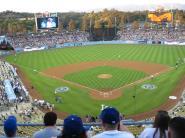Source:
Technical igK Dpt.
1 October 2013
Turfgrass Surface, AGRICULTURAL SYSTEM
Ornamental Lawns and Turfgrass sports fields such as Golf courses, Football, Baseball, Rugby, Soccer, Polo fields, Racetracks, etc., are a crop, and some comprise several crops at the same time. They are an agricultural system.
 Superficie de Césped , SISTEMA AGRÍCOLA
Superficie de Césped , SISTEMA AGRÍCOLA
They pertain both to the areas of Plant Production and Botany, and in a broader sense to Agronomy. It is based on very diverse disciplines, such as Climatology, Soil Science, Plant Physiology, Botany, Genetics and Plant Breeding, Hydraulics, Mechanization, Entomology, Plant Pathology and Economics. "Starting with all these areas of scientific knowledge and making a coordinated and harmonic use of them, we obtain useful plant products for people under the best economic, ecological conditions and respect for the environment." (Urbano, 1995). The plant products obtained can be used for food, pharmaceuticals, energy, textiles, environmental needs, soil stabilization, sporting or leisure.
The product, in case of lawns and sport turfgrass fields,is a perennial grassland made up of one or several turfgrass species, which with correct agricultural practices creates a useful and playable surface. Turfgrass is commonly used to identify approximately 20 species in the Poaceae (grasses) family, which includes 600 genera and 7,500 species. We all know some grasses, such as wheat, corn, barley and oats. However, there are three main features that separate the turfgrasses species from the rest of grasses:
- They tolerate frequent mowing
- They form a dense and contiguous surface
- They bear traffic and being stepped on
Turfgrass maintenance is defined by a range of agricultural activities determined by the use, level of functionality and quality needed. Turfgrass Management or Greenkeeping, also involves being consistent with the resources, the environment and budget, the three aspects of the same, efficiency. Turfgrass lawn is not the same for a soccer field or the green on golf course.
About Sport Turfgrass , regardless of the surface design and style, a consistent management and maintenance philosophy is required, because the condition of the field is crucial when determining how the game should be played.
The turfgrass surface is the most important variable and should make the field as balanced and safe as possible for the players. For this reason the greenkeeper is essential for ensuring a field reaches its maximum potential during each season of the year, through agronomic science, experience and the budget, and by maintaining a daily Greenkeeping tasks, which can be summarized as:
- Overseeing construction methods (sands selection, drainage, irrigation system installation, etc.)
- Selecting the species that are best adapted to the environmental conditions, soil, water quality, budget, etc.
- Correct steps for seeding, overseeding and establishment.
- Adequate and correct use of mowing, fertilizing and irrigation practices.
- Adequate soil aerating and associated cultural practices.
- Correct use of pesticides: This is a responsible and qualified professional recommendation, adjusted to regulations of: herbicides, fungicides, insecticides, plant growth regulators (PGR), applied by a qualified spry-technician with the specific machinery and personal protective equipments (PPE`s).